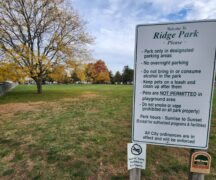By JAN LARSON McLAUGHLIN
BG Independent News
Bowling Green City Council is continuing to try to clear up some contentious parts in the proposed historic preservation ordinance. Members recently picked through the proposed ordinance line by line, so it would be ready to go before City Council Monday evening.
After much debate, council discussed that in order to create historic districts no person or property will have more than one vote. That means a property owner will have one vote – no matter how many properties that person may own in the proposed district. And it means that each address is allowed one vote – regardless of how many people share ownership of the property.
The goal of the historic preservation plan is to help the city retain historically significant structures. The ordinance could slow the cultural decline experienced in the older housing stock in the last few decades.
Some historic homes are losing the battle against time and rental transformation. And the longer the preservation efforts are on hold, the more some structures deteriorate, commission members have said.
The objective of historic preservation is to protect the historic integrity of buildings – and help when possible with restorations. It is not to nitpick and tell homeowners what they can and cannot do with their properties, commission members have stressed.
The plan would require property owners in designated historic areas to meet standards when making substantive changes to the exterior of buildings. There would be no rules for the interior of structures.
City Council will vote on the historic preservation ordinance at its Monday meeting.
There are currently 78 cities in Ohio with historic preservation ordinances – including every other university community in the state except Bowling Green.
In Athens, Oxford and Perrysburg, the decision for an area to become part of a historic preservation district is made by the city and property owners don’t get a vote. In Kent, owners get one vote for each property they own in a given area.
Bowling Green’s historic preservation commission wrote the ordinance to give each property owner one vote – regardless of the number of properties they own. So if a landlord owned eight homes on a block, he would just have one vote.
John Sampen, head of the historic preservation commission, explained the rationale.
“We don’t give extra votes to people who are richer than others, or own more property,” he said.
If landlords were given one vote for each rental property, “these owners would have near veto power,” and few historic preservation districts would be created, HPC member Les Barber said.
But council member Greg Robinette suggested that landowners should get one vote for each unique address they own in a district.
Robinette said the creation of historic districts would ultimately end up before City Council.
“We are the ultimate determiners of this,” he said.
But council member Jeff Dennis questioned whether efforts to create historic districts would ever make it to council if the majority of the votes are against creation of a district.
Barber agreed
“It would never get to council if the majority of the owners don’t recommend it,” he said.
Robinette made a motion that landowners be given a vote for each unique address they own. The motion failed, with all other council members voting against it.
The issue was also debated about how many votes would be allowed for an individual address with multiple owners – such as a couple or a trust. The majority of council members preferred giving no more than one vote per address.
City Attorney Mike Marsh was asked to write language in the ordinance for both voting issues.





